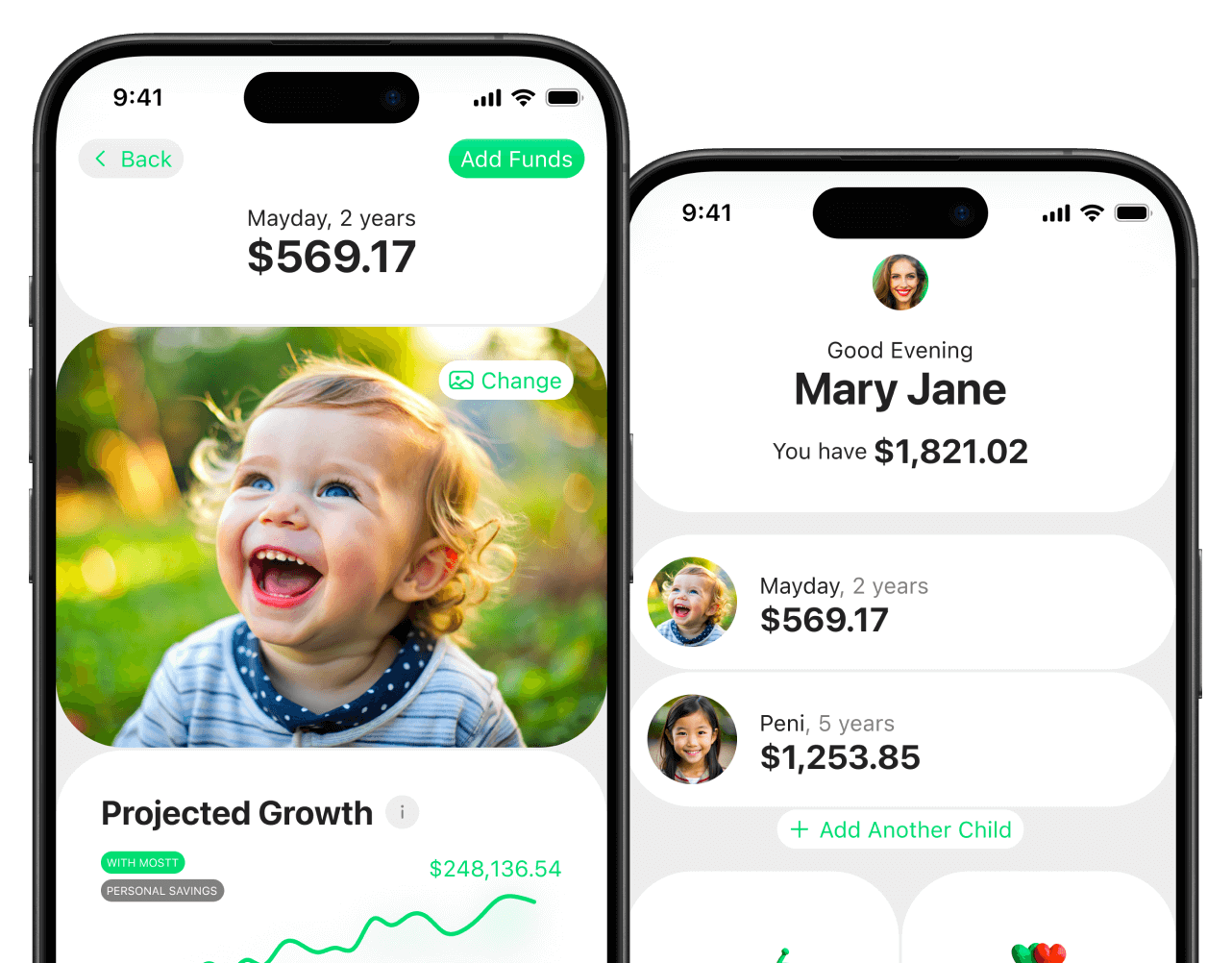The Wealth-Building Plan Every Parent Wishes They Started Sooner
Most parents want to give their kids a great life, but the best gift isn’t the latest toy or a bigger allowance—it’s the wisdom and strategy to create financial freedom. The problem is, many of us weren’t taught these things growing up, and we don’t want our kids to make the same mistakes we did.
So, how do you build a strong financial foundation for your child? Here are a few practical steps to ensure they step into adulthood with confidence, options, and wealth.
Consider Different Investment Accounts for Your Child’s Future
Many parents open a savings account for their child, but while savings are a great start, they won’t keep up with inflation or maximize long-term financial growth. Investing is essential to building wealth, but with so many options—529 plans, custodial accounts, and brokerage accounts—it’s important to understand the pros and cons before making a decision.
529 College Savings Plans: Tax Benefits but Limited Flexibility
A 529 plan is a tax-advantaged way to save for future education costs. The money grows tax-free, and withdrawals are tax-free when used for qualified education expenses like tuition, books, and housing. Additionally, many states offer tax deductions or credits for contributions.
✅ Pros:
-
Tax-free growth and withdrawals for education expenses.
-
Contributions may qualify for state tax benefits.
-
Anyone (parents, grandparents, relatives) can contribute.
❌ Cons:
-
Funds must be used for education; if not, non-qualified withdrawals incur taxes and a 10% penalty.
-
Investment choices are often limited compared to a standard brokerage account.
-
If your child doesn’t go to college or needs less money than expected, repurposing the funds can be tricky.
Bottom Line: A 529 plan is great if you’re confident your child will pursue higher education, but it may not be the best option if you want more flexibility.
Custodial Accounts (UGMA/UTMA): Easy to Open, But Parents Lose Control
A custodial account (UGMA/UTMA) allows parents to invest in a child’s name. The money can be used for anything that benefits the child—education, a first car, a home, or any other major expense. Unlike a 529 plan, there are no restrictions on how the funds can be used.
✅ Pros:
-
More flexibility than a 529 plan—funds aren’t limited to education.
-
Can hold stocks, ETFs, and other investments for long-term growth.
-
Easy to set up and manage.
❌ Cons:
-
The money legally belongs to the child and transfers to them at the age of majority (18 or 21, depending on the state). Parents lose all control over how the funds are used.
-
Investments are subject to the kiddie tax, meaning a portion of earnings may be taxed at the parents’ tax rate.
-
Unlike a 529 plan, there are no specific tax benefits for contributions.
Bottom Line: Custodial accounts are a solid option for investing in a child’s future, but once they reach adulthood, they can use the money however they want—even if it’s not the way you intended.
Why a Brokerage Account with Mostt? Maximum Flexibility & Control
For parents who want full control over their child’s financial future, a brokerage account with Mostt offers the most flexibility and investment freedom.
✅ Pros:
-
No restrictions—use the money for education, a first home, starting a business, or anything else.
-
Full parental control—unlike a custodial account, you manage the funds.
-
Access to a range of investments, including stocks and ETFs, without the limitations of 529 plans.
-
No penalties for withdrawing funds when needed.
❌ Cons:
-
Unlike a 529 plan, there are no specific tax benefits for education-related withdrawals.
Bottom Line: A brokerage account with Mostt gives parents the ability to invest in their child’s future without restrictions or loss of control. Whether you want to build wealth for their education, homeownership, or long-term financial security, this approach allows you to make investment decisions that align with your family’s unique goals.
A Combination Approach
There’s no one-size-fits-all answer, and many families use a combination of accounts to maximize benefits. You might:
-
Use a 529 plan for tax-free education savings.
-
Invest in a brokerage account with Mostt for unrestricted financial growth.
-
Open a custodial account if you’re comfortable with your child gaining control at adulthood.
Regardless of the approach, the most important step is starting now. The sooner you invest, the more time your child’s wealth has to grow. With Mostt, parents can take an active role in securing their child’s financial future—on their own terms.
Start Today, Reap the Benefits Tomorrow
Every day you wait is a missed opportunity. But the good news? It’s never too late to start. Pick one of these strategies and take action this week. Financial security isn’t just for the privileged; it’s for the prepared. With a little planning, your child will have the financial foundation they need to build a life of abundance.
Which step will you take first? Let’s start building their future wealth today.




